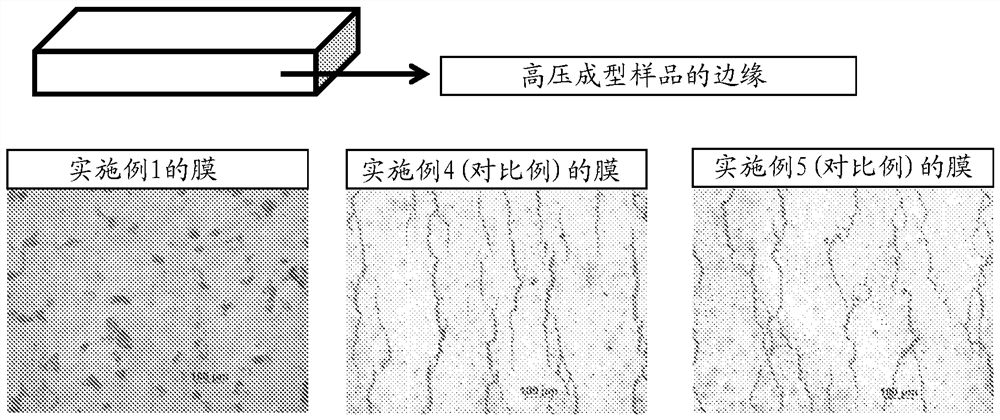Formable anti-glare polymer film
A polymer film, anti-glare technology, used in polyurea/polyurethane coatings, instruments, anti-reflection coatings, etc., to achieve the effect of good molding performance
- Summary
- Abstract
- Description
- Claims
- Application Information
AI Technical Summary
Problems solved by technology
Method used
Image
Examples
Embodiment 1
[0152] Approximately 40.65 grams of UA122P (a difunctional urethane acrylate supplied by Shin Nakamura, Japan) was weighed into a container and 30 grams of 1-methoxy-2-propanol was added. The mixture was stirred until a homogeneous solution appeared. To this solution was added 27.18 g of PETIA (pentaerythritol triacrylate from Allnex S.à r.l) and 0.11 g of Additol TM VXL 4930 (from Allnex S.à r.l). The mixture was stirred for an additional 15 minutes to ensure a homogeneous solution, followed by the addition of 2.06 g of Irgacure TM 184 (photoinitiator from BASF SE). The theoretical crosslink density is calculated to be 1.81·10 -3 .
[0153] Apply the liquid formulation to Makrofol as described above on the roughened PMMA surface TM 908 base. The breaking elongation of this coating film was 3.9%.
Embodiment 2
[0154] Embodiment 2 (comparative example):
[0155] A membrane has been prepared as described in Example 1, but the membrane used is Makrofol TM SR253.
[0156] The breaking elongation of this coating film was 3.5%. This coating film did not exhibit antiglare properties.
Embodiment 3
[0157] Embodiment 3 (comparative example):
[0158] Approximately 27.18 grams of UA122P (urethane acrylate supplied by Shin Nakamura, Japan) was weighed into a container and 30 grams of 1-methoxy-2-propanol was added. The mixture was stirred until a homogeneous solution appeared. To this solution was added 40.65 g of PETIA (pentaerythritol triacrylate from Allnex S.à r.l) and 0.11 g of Additol TM VXL 4930 (from Allnex S.à r.l). The mixture was stirred for an additional 15 minutes to ensure a homogeneous solution, followed by the addition of 2.06 g of Irgacure TM 184 (photoinitiator from BASF SE). The theoretical crosslink density was calculated to be 2.71·10 -3 .
[0159] Apply the liquid formulation to Makrofol as described above on the roughened PMMA surface TM 908 base. The breaking elongation of this coating film was 2.9%.
PUM
| Property | Measurement | Unit |
|---|---|---|
| surface roughness | aaaaa | aaaaa |
| thickness | aaaaa | aaaaa |
| thickness | aaaaa | aaaaa |
Abstract
Description
Claims
Application Information
 Login to View More
Login to View More - R&D
- Intellectual Property
- Life Sciences
- Materials
- Tech Scout
- Unparalleled Data Quality
- Higher Quality Content
- 60% Fewer Hallucinations
Browse by: Latest US Patents, China's latest patents, Technical Efficacy Thesaurus, Application Domain, Technology Topic, Popular Technical Reports.
© 2025 PatSnap. All rights reserved.Legal|Privacy policy|Modern Slavery Act Transparency Statement|Sitemap|About US| Contact US: help@patsnap.com



